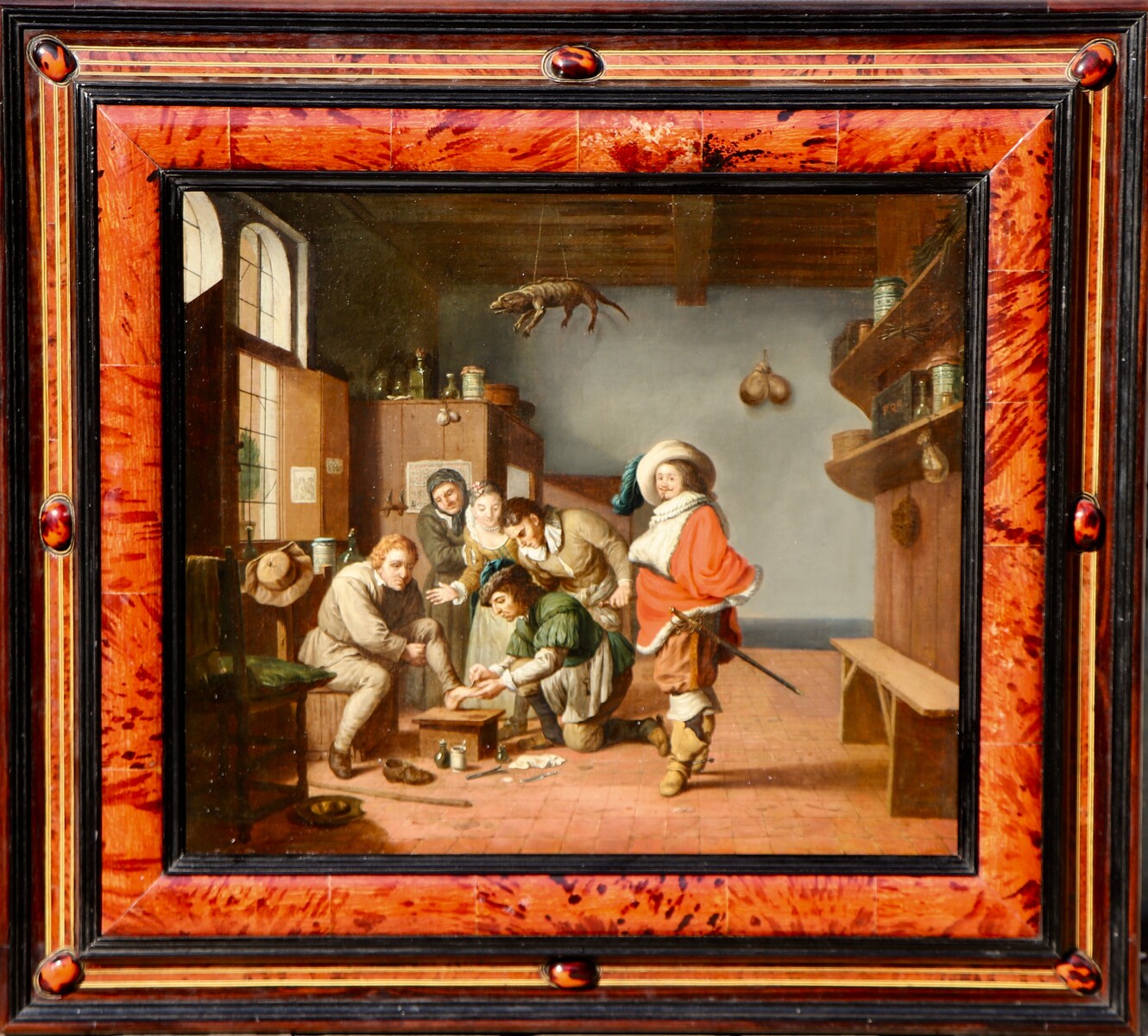A surgeon treating a male patient’s foot
Oil on canvas : 48,7 X 57,2 cm
Signed bottom right on the bench “J.Horemans”
Frame : 74,0 X 82,2 cm
"All paintings are fully documented with texts and photographs of comparative items. All this information is removed from our website once the painting is sold".
SOLD

